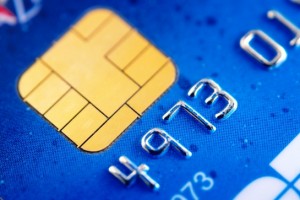 Are you one of the nearly 120 million American consumers using a computer-chip debit or credit card this holiday season? If you haven’t received your card yet, odds are you will soon. Smart Card Alliance estimates that nearly 600 million people will have the cards by the end of 2015.
Are you one of the nearly 120 million American consumers using a computer-chip debit or credit card this holiday season? If you haven’t received your card yet, odds are you will soon. Smart Card Alliance estimates that nearly 600 million people will have the cards by the end of 2015.
Chip cards—also known as smart cards, smart-chip cards and EMV cards—provide better protection against data breaches and fraudulent card use, but they’re also generating a lot of questions from consumers.
“In Europe and other countries, the shift to chip cards is already well underway,” said Peggy Olive, UW-Extension/UW-Madison financial capability specialist. “In the U.S., merchants and financial institutions are adding technology and processing systems, as well as complying with new liability rules that went into effect on Oct. 15. Since then, merchants who still use non-chip transactions may be liable for fraud.”
How are chip cards different?
A computer chip—a small, metallic square—embedded on the front of the new card is what makes it different from magnetic stripe cards. Magnetic stripe cards never change or update the data they contain, which made it much easier for fraudsters to reuse a stolen card repeatedly. Chip cards create a new transaction code each time they’re used, so a stolen transaction number can’t be used again. Plus, it is harder for someone to make a fake chip card than a fake magnetic strip card.
The updated technology won’t prevent data breaches from happening, but it makes it much harder for someone to steal using your card.
How do I use a chip card to make a purchase?
Instead of swiping your card, you’ll be asked to insert the card into a terminal slot and wait for the system to process it. This is known as “card-dipping.” Data will flow between the financial institution that issued the card and the chip to create a one-of-a-kind transaction code. This process takes slightly longer than using the magnetic swipe card, so consumers are advised to be patient.
At this point in the transition to chip technology, the vast majority of consumers will receive a card that requires their signature during the transaction. There may be a small number of cards that ask for a PIN number—the same process as when you use a checking account debit card. But overall, most cards will require only a signature. If you do receive a card that asks for a PIN, it will be designed to also accept a signature, so you will always be able to complete your purchase.
Finally, don’t forget to remove your card at the end of a transaction. Because of the longer processing time, consumers are more likely leave their cards behind in the terminal.
What’s next?
The main goal right now is to make the switch to chip-and-signature cards in the U.S. In the next two or three years, after businesses are fully prepared to process chip cards, consumers will begin to receive cards that need a PIN number. Until then, expect that your new chip card will need your signature for a purchase.
The PIN-based cards, when they arrive, will also be able to support “contactless” transactions where you will simply be able to tap the terminal scanner with the card to make your purchase.
Good news for consumers (and card-issuing financial institutions) is that, if someone does manage to use a counterfeit, stolen or compromised chip card, the cost of the fraud will fall to the merchant if they have not implemented the new card-chip technology.
Even though chip technology will provide more protection against fraud, you should still review your credit and debit card statements regularly to be fully protected.
To learn more about computer-chip credit cards, visit http://www.consumerfinance.gov/blog/category/credit-cards/
For additional financial education information, contact Michelle Tidemann, Fond du Lac County UW Extension Family Living Educator at 920-929-3174 or https://fonddulac.extension.wisc.edu




